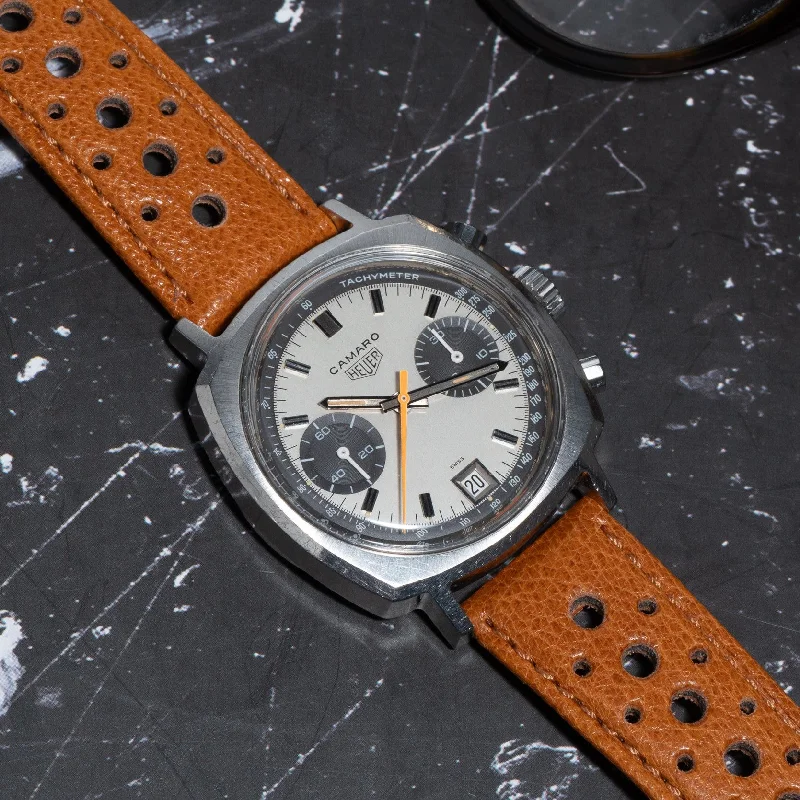When comparing Heuer's chronograph offerings, the Camaro is a definite outlier.
But despite its distinctive looks, the Camaro held only a short production run, making it much scarcer than its more popular stablemates such as the Carrera, the Autavia, and the Monaco. And while they've been cropping up more commonly in recent years on the collector circuit, there are iterations that are less frequently seen — this one, a Reference 73443T, being one of them.
At the time Heuer launched the Camaro, the company was trying to make inroads in the U.S. market. Hence the name “Camaro,” which was a direct homage to the muscle car that Chevrolet released two years prior in 1966. With Heuer's connection to Formula 1 being so deeply ingrained (with drivers like Jochen Rindt and preferring the Autavia), the alignment between the Swiss watch manufacture and an American car company could seem incongruous. Yet from 1967 to 1969, the Chevrolet Camaro was the official pace car of the Indy 500, the most famous racing event in the United States, and thus Jack Heuer felt justified in choosing that name for his new chronograph.
However, by the time the watch was released in 1968, Heuer had turned its focus to producing an automatic chronograph movement, the Calibre 11, the debut of which would overshadow manual chronographs and turn the watch world on its head. When faced with the technological advantage of an automatic chronograph movement, sales of the Camaro languished despite the connection with motorsports. The Autavia, the Carrera, and the Monaco all got the new automatic movement, but the Camaro, owing to its smaller case size, did not, and Heuer ceased production in 1972.
Visually, at least, the Camaro has the same DNA as that of the Carrera and the Monaco. Certainly, the Carrera and the Camaro have similar dials and hands, and there’s no denying that the Camaro's case has much in common with that of the Monaco — perhaps the most distinctive square-case chronograph around.
But the Camaro has design quirks that make it a watch all its own. Take the variety of finishing on the case — a gorgeous sunburst pattern on the front that softens the look of sharp, polished sides and straight lugs. And while the Monaco feels almost ungainly on the wrist, the hand-cranked movements used in the Camaro (a Valjoux 7734 in this instance), allowed for a smaller, svelter case that wears exceptionally well, even by modern standards.
This example features an absolutely stunning “exotic” dial configuration — a black-on-white panda with a bright orange chronograph sweep hand. Housed in a 37mm ‘squound’ stainless steel cushion case with an acrylic crystal, signed crown, and fluted pushers, it features an outer tachymeter track and a date window at 6:00 which gives the symmetrical dial a sporty touch that harkens to the form-follows-function design language of the golden era of motorsports.
With an honest-worn case and a vibrant dial, this particular piece is an excellent example of an uncommon reference — enough to whet the appetite of any lover of obscure Heuer chronograph designs.

